
As we celebrate World Heritage Day, we take a look at some of the most historically significant and interesting sovereign coinage currently available at Hattons of London. These sovereign coins offer a fascinating and deeper look into the last 200 years of British history and coinage, recording some of the most important moments in the history of the world’s greatest gold coins.
The King George IV Gold Sovereign of 1825-1830
The first gold sovereign coin of King George IV featured a portrait of the king in classical style by the Italian engraver Benedetto Pistrucci, with his rendition of the St George slaying the dragon on the reverse. However, the king disliked the portrait, and in 1825 he insisted that a new portrait was created that was similar to a marble bust by Sir Francis Chantry. Pistrucci refused to copy another artist’s work and so William Wyon was tasked with designing the new portrait. Wyon was in his ascendancy and later proved to be possibly the finest British coin designer ever known.
The new portrait of King George IV was a refreshingly modern interpretation, and omitted the laurel wreath – the first time since the Restoration that a British king had been depicted. Wyon’s bare-handed portrait of the king is accompanied by a reverse design of the Royal Arms within a garnished shield created by a Frenchman, Jean Baptiste Merlen. It was also the very first to feature the Shield of the Royal Arms on the reverse. These constitute just 2% of the total number of British sovereigns minted, and are of great importance to collectors.
The Queen Victoria Gold Sovereign of 1838-1874
Although Victoria came to the throne in 1837, the first gold sovereign of her reign was not struck until the following year. This sovereign portrait was designed by William Wyon, chief engraver at the Royal Mint, and depicts Queen Victoria as a young woman with her hair tied up with a ribbon. This portrait, executed with great skill and style, was so popular that it was used until 1887. This portrait also featured in the design of the famous Penny Black stamp; the world’s first postage stamp, and it remained on British stamps until her death in 1901.
The reverse, designed by engraver Jean Baptiste Merlen, is the armorial shield of Great Britain. It features the arms of the four countries of England, Scotland, Wales and Northern Ireland within a shield, topped by a crown. A wreath encircles the shield and below the wreath is an intertwined rose, thistle and shamrock. King George IV was the first monarch to use this reverse design for his gold sovereigns and this carried on into the reign of William IV. In 1874, the Royal Mint ceased using the Shield design and it has only been used on one further occasion on the gold sovereign; a special one-year only issue in 2002 for the Golden Jubilee of Queen Elizabeth II.
The Queen Victoria Jubilee Portrait Gold Sovereign of 1887
For half a century Queen Victoria had appeared on gold sovereigns as a teenager, and so in 1887 to coincide with her Golden Jubilee, it was deemed fit that a new portrait should be created for the coinage. The portrait was designed by Joseph Edgar Boehm and became known as the ‘Jubilee Head’ or ‘Jubilee Portrait’. Unfortunately, the portrait was met with considerable disfavour, therefore it was replaced in 1893 by the ‘Veiled Head’ portrait. This meant that the Queen Victoria Jubilee Head was one of the shortest-lived portraits in the history of British coinage.
The first year of this type is significant to collectors, not only as the first year of the type but also because it is the only British sovereign struck in what is known as ‘yellow gold’. As the new portrait had a much finer level of detail, the Royal Mint decided to soften the gold by adding 1.25% silver to the alloy. However, the usual alloy proved acceptable through tests, so silver was not used for the following year. The sovereign featured the classic depiction of St George slaying the dragon, but for the first time since 1821, St George was depicted with a flowing streamer from his helmet, which had been part of the original design of the first sovereign in 1817.
The King George V Gold Sovereign of the London Mint of 1925
Within just days of the outbreak of the First World War, the British government issued Treasury Notes as currency and began the withdrawal of gold coinage. By the summer of 1915 gold coins had all but vanished from circulation. However, in 1925, Winston Churchill controversially put Britain back onto the Gold Standard. The 1925 sovereign was struck, eight years after the last sovereign had been struck, and it would be the last ever British currency sovereign, ending a 108 year tradition of circulating gold.
These coins were never released into circulation, as it was deemed imprudent to issue gold as coinage, and so the ‘Churchill’ sovereign lay in the vaults of the Bank of England. It is thought that these coins were given to those operating behind enemy lines in WWII as a form of emergency currency. They were re-struck in 1949, 1951 and 1952 to remove the premium that counterfeits could earn, however, as they still carried the portrait of King George V, it meant that they were minted under the authority of a king who was no longer alive.
The Queen Elizabeth II Gold Sovereign of 1957
No gold sovereign coins were issued for Her Majesty’s coronation in 1953 as the provisions of post-war austerity were still in force, and it was not until 1957 that the first gold sovereign coins were struck with a portrait of Queen Elizabeth II. This sovereign was struck primarily for sale into global gold bullion markets and features the coronation portrait of the Queen that had appeared on her regular coinage since 1953, and would continue to be used until 1970. Designed by Mary Gillick, the portrait shows a youthful Queen with her hair tied in a fillet and wreath; inspired by the first coinage portrait of Queen Victoria.
The reverse design, created by the Italian engraver Benedetto Pistrucci, is the classic interpretation of St George slaying the dragon, which was first used for the modern sovereign coins of 1817. Almost 200 years later, this design remains on our gold sovereign coins, making it one of the world’s most widely recognised coin designs. This gold sovereign is a type that was only issued for one year as it features a finely milled edge with 168 grains, whereas all other issues of Queen Elizabeth II have just 108 grains. No Proofs were struck that year, making the bullion striking the best quality available.
The Queen Elizabeth II Gold Sovereign Proof of 2002
In 2002, Queen Elizabeth II celebrated her Golden Jubilee. As this royal event had not taken place for over a century, a new design was created for the gold coins issued in that year and the St George and the dragon design was displaced from the reverse side. In a wonderful link with history, these coins used a design that had not been seen on British gold sovereign coins since the reign of the previous monarch to celebrate the Golden Jubilee, Queen Victoria. The design was the Shield of the Royal Arms.
The shield design was used first on gold sovereign coins in 1825 under King George IV, then for King William IV, and then on the coins of Queen Victoria until 1887, after which all sovereigns featured St George and the dragon. The fact that this design was last seen on the gold of Queen Victoria, the most recent monarch also to celebrate a Golden Jubilee, is one that increases collector interest in the 2002 gold sovereign. This design was only ever struck in the year 2002 onto the gold half sovereign, sovereign, double sovereign and quintuple sovereign.
The Queen Elizabeth II 2017 Twelve Sided Gold Sovereign
The 200th anniversary of the British gold sovereign was celebrated in 2017. The Sovereign is a major national icon; one of the chief coins of the world in the late 19th century and still minted even today. Its history is probably the most fascinating of all the world’s coinage and it is rightly regarded as the most impressive gold coin anywhere in the world. As part of the anniversary celebrations, a new sovereign coin was struck in the same shape as the new British circulating pound coin, making it the first of its kind in the world.
This sovereign, struck in solid 22 carat gold, features a cameo portrait of Queen Elizabeth II with the latin inscription DIU VIVERE MONARCHIA (“long live the monarchy”). It combines two significant attributes. Firstly, it is minted from solid 22 carat gold, the historic purity of all gold sovereign coins dating back 200 years to the first issue of 1817. Also, this coin has value as a collector’s edition as it is the first twelve-sided gold sovereign to be issued in the world. This means that it will always be sought after as the first of its kind.
The Queen Elizabeth II 2017 Double Portrait Platinum Wedding Gold Sovereign
In 2017, Her Majesty The Queen and Prince Philip reached their platinum wedding anniversary. This is the first time in British history a monarch has celebrated this milestone, and it is happening in the reign of Britain’s longest reigning monarch. It is yet another milestone in a reign the likes of which will probably never be seen again. Therefore, a new world first sovereign was released to celebrate the first Platinum wedding anniversary in British royal history. Prince Philip had a long and distinguished career of public service alongside The Queen.
Now, in an unprecedented move, that contribution is acknowledged as he takes his place alongside the Queen on this gold sovereign coin. This is the very first time double portraits, also known as ‘jugate’ or ‘conjoined’, have appeared on the gold sovereign. It is also the first time in the 200 years of the modern sovereign, that a royal consort has had their portrait on a gold sovereign. This coin is considerably popular with those who want to join in the celebrations of the Platinum Wedding Anniversary, but also those who will want to pay tribute to Prince Philip.
Looking to buy gold sovereigns? You can browse these alongside the other Twelve Greatest Sovereign Coins HERE.

 The 2026 Centenary of Queen Elizabeth II Gold One Tenth Sovereign
The 2026 Centenary of Queen Elizabeth II Gold One Tenth Sovereign The 2026 Centenary of Queen Elizabeth II Gold Sovereign
The 2026 Centenary of Queen Elizabeth II Gold Sovereign The 2026 Centenary of Queen Elizabeth II Gold Prestige Sovereign Proof Set
The 2026 Centenary of Queen Elizabeth II Gold Prestige Sovereign Proof Set The 2026 Centenary of Queen Elizabeth II Gold Essential Sovereign Set
The 2026 Centenary of Queen Elizabeth II Gold Essential Sovereign Set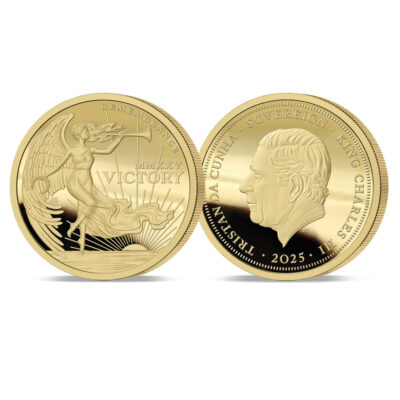 The 2025 Remembrance Gold Sovereign
The 2025 Remembrance Gold Sovereign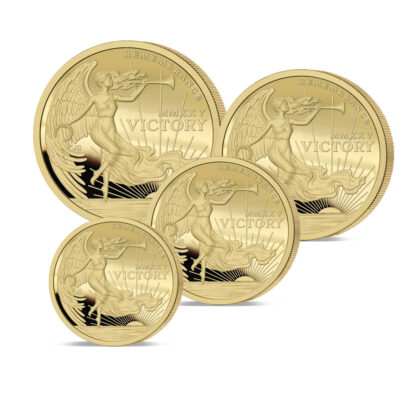 The 2025 Remembrance Gold Prestige Sovereign Proof Set
The 2025 Remembrance Gold Prestige Sovereign Proof Set The 2025 Remembrance Gold Essential Sovereign Set
The 2025 Remembrance Gold Essential Sovereign Set The 2025 Remembrance Gold Double Sovereign
The 2025 Remembrance Gold Double Sovereign The 2022 Queen Elizabeth II Tribute Gold Sovereign
The 2022 Queen Elizabeth II Tribute Gold Sovereign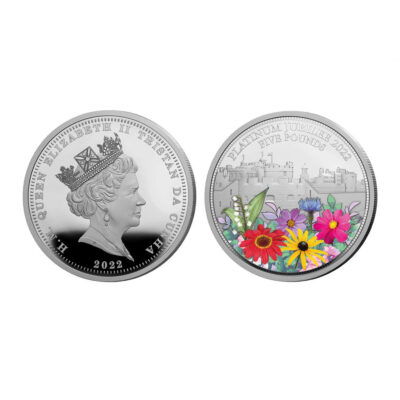 The 2022 Platinum Jubilee Tower in Bloom Silver Five Pound
The 2022 Platinum Jubilee Tower in Bloom Silver Five Pound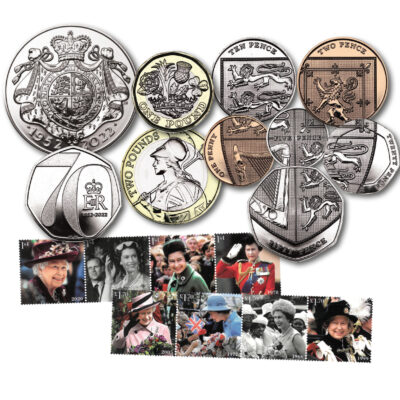 Queen Elizabeth II 2022 Platinum Jubilee Coin and Stamp Set
Queen Elizabeth II 2022 Platinum Jubilee Coin and Stamp Set QEII 2002 Golden Jubilee coin and stamp set
QEII 2002 Golden Jubilee coin and stamp set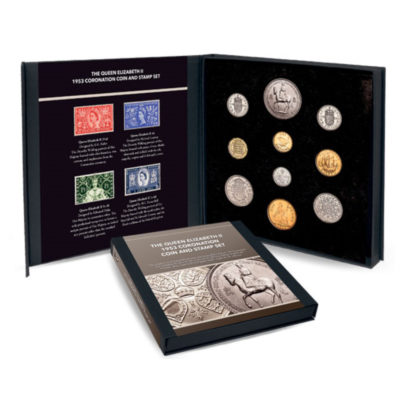 QEII 1953 Coronation coin and stamp set
QEII 1953 Coronation coin and stamp set King Charles II Silver Crown of 1662-1684
King Charles II Silver Crown of 1662-1684 The 2026 Centenary of Queen Elizabeth II Gold Prestige Infill Sovereign Set
The 2026 Centenary of Queen Elizabeth II Gold Prestige Infill Sovereign Set The 2026 Centenary of Queen Elizabeth II Gold Essential Infill Sovereign Set
The 2026 Centenary of Queen Elizabeth II Gold Essential Infill Sovereign Set The 2026 Centenary of Queen Elizabeth II Gold Double Sovereign
The 2026 Centenary of Queen Elizabeth II Gold Double Sovereign The 2025 Remembrance Gold Prestige Infill Sovereign Set
The 2025 Remembrance Gold Prestige Infill Sovereign Set The 2025 Remembrance Gold Essential Infill Sovereign Set
The 2025 Remembrance Gold Essential Infill Sovereign Set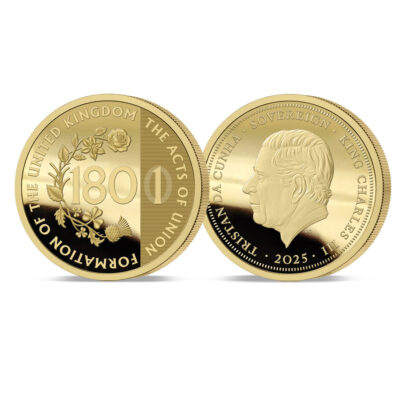 The 2025 Anniversary of the United Kingdom Gold Sovereign
The 2025 Anniversary of the United Kingdom Gold Sovereign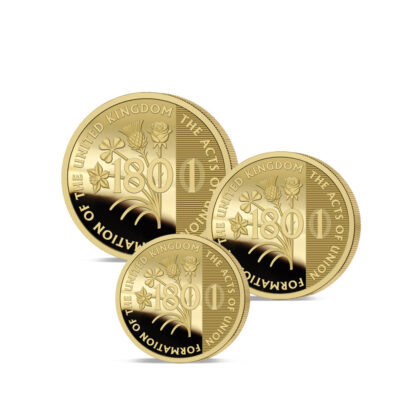 The 2025 Anniversary of the United Kingdom Gold Essential Sovereign Set
The 2025 Anniversary of the United Kingdom Gold Essential Sovereign Set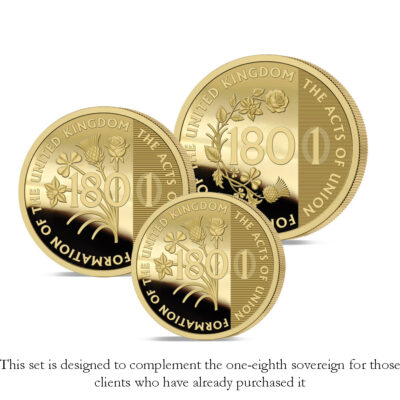 The 2025 Anniversary of the United Kingdom Gold Prestige Infill Sovereign Set
The 2025 Anniversary of the United Kingdom Gold Prestige Infill Sovereign Set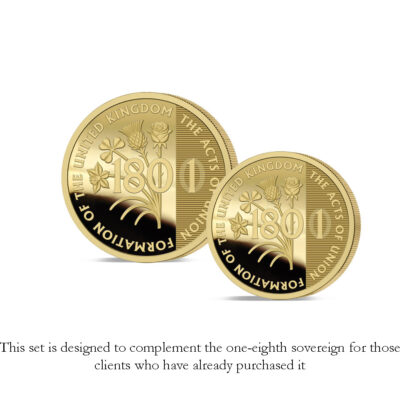 The 2025 Anniversary of the United Kingdom Gold Essential Infill Sovereign Set
The 2025 Anniversary of the United Kingdom Gold Essential Infill Sovereign Set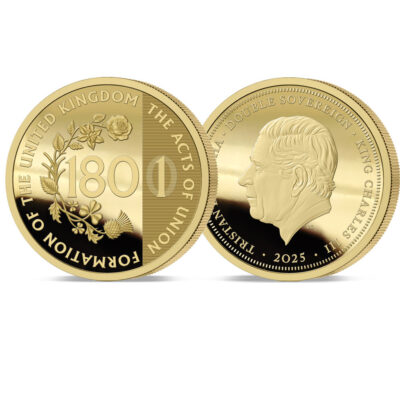 The 2025 Anniversary of the United Kingdom Gold Double Sovereign
The 2025 Anniversary of the United Kingdom Gold Double Sovereign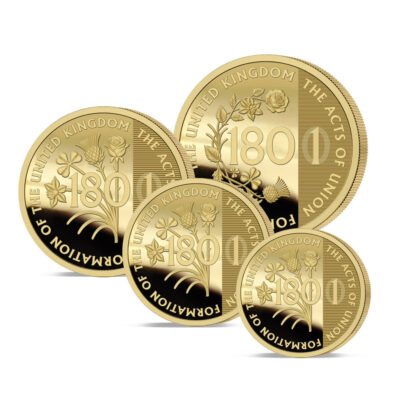 The 2025 Anniversary of the United Kingdom Gold Prestige Sovereign Proof Set
The 2025 Anniversary of the United Kingdom Gold Prestige Sovereign Proof Set The 2025 Queen Mother 125th Anniversary Gold Sovereign
The 2025 Queen Mother 125th Anniversary Gold Sovereign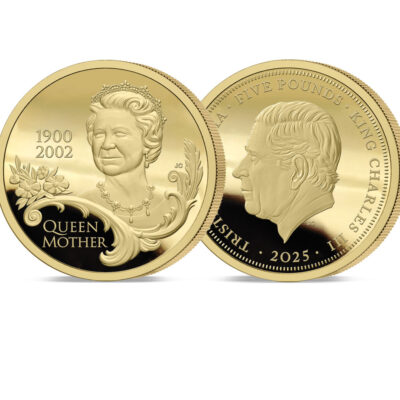 The 2025 Queen Mother 125th Anniversary Gold Five Pound Sovereign
The 2025 Queen Mother 125th Anniversary Gold Five Pound Sovereign Queen Mother Tribute Gold Sovereign and Silver Crown Set
Queen Mother Tribute Gold Sovereign and Silver Crown Set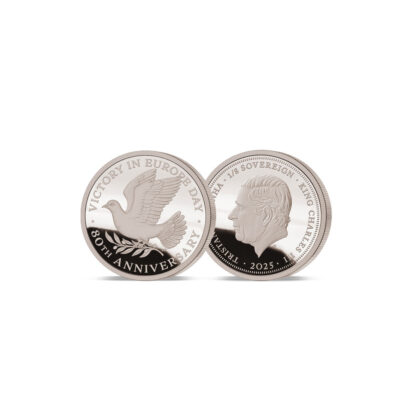 The 2025 VE Day 80th Victory Gold One Eighth Sovereign
The 2025 VE Day 80th Victory Gold One Eighth Sovereign The 2025 VE Day 80th Victory Gold Sovereign
The 2025 VE Day 80th Victory Gold Sovereign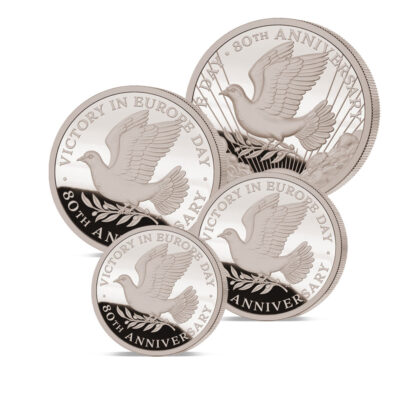 The 2025 VE Day 80th Victory Gold Prestige Sovereign Proof Set
The 2025 VE Day 80th Victory Gold Prestige Sovereign Proof Set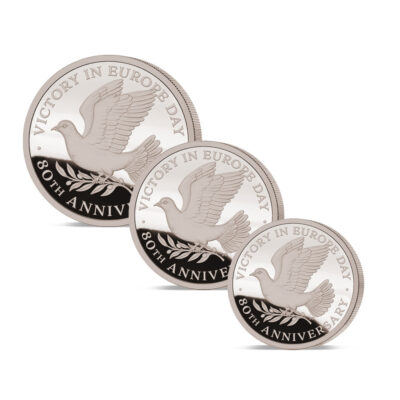 The 2025 VE Day 80th Victory Gold Fractional Sovereign Set
The 2025 VE Day 80th Victory Gold Fractional Sovereign Set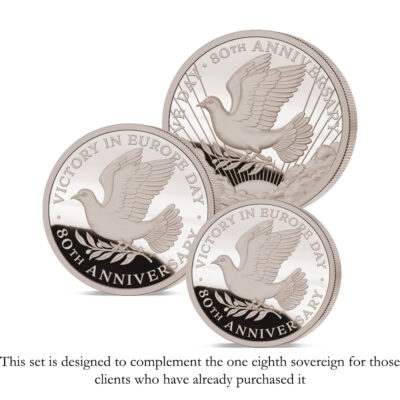 The 2025 VE Day 80th Victory Gold Prestige Infill Sovereign Set
The 2025 VE Day 80th Victory Gold Prestige Infill Sovereign Set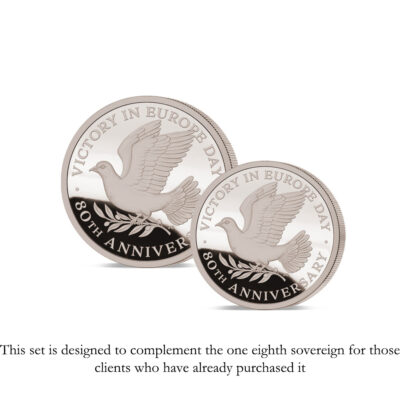 The 2025 VE Day 80th Victory Gold Fractional Infill Sovereign Set
The 2025 VE Day 80th Victory Gold Fractional Infill Sovereign Set The 2025 VE Day 80th Victory Gold Double Sovereign
The 2025 VE Day 80th Victory Gold Double Sovereign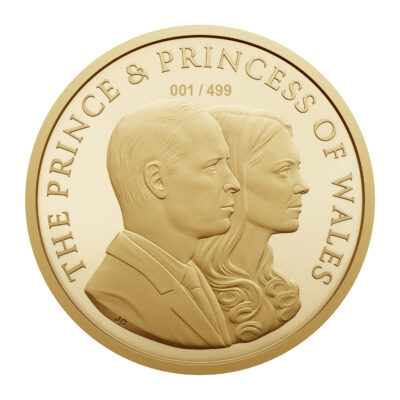 The 2025 Prince and Princess of Wales Matte Proof Gold Sovereign
The 2025 Prince and Princess of Wales Matte Proof Gold Sovereign The 2024 Britain's WWII Aircraft Legends Gold Sovereign
The 2024 Britain's WWII Aircraft Legends Gold Sovereign The 2024 Britain's WWII Aircraft Legends Gold Prestige Sovereign Proof Set
The 2024 Britain's WWII Aircraft Legends Gold Prestige Sovereign Proof Set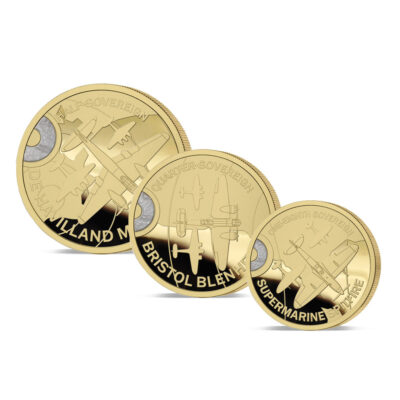 The 2024 Britain's WWII Aircraft Legends Gold Fractional Sovereign Set
The 2024 Britain's WWII Aircraft Legends Gold Fractional Sovereign Set The 2024 Britain's WWII Aircraft Legends Gold Prestige Infill Sovereign Set
The 2024 Britain's WWII Aircraft Legends Gold Prestige Infill Sovereign Set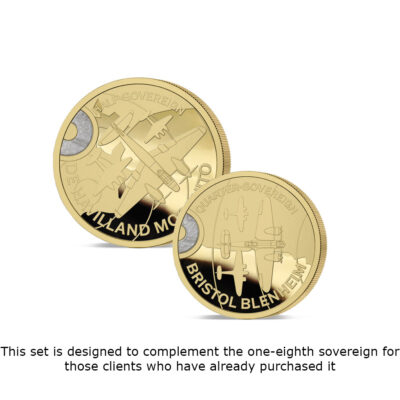 The 2024 Britain's WWII Aircraft Legends Gold Fractional Infill Sovereign Set
The 2024 Britain's WWII Aircraft Legends Gold Fractional Infill Sovereign Set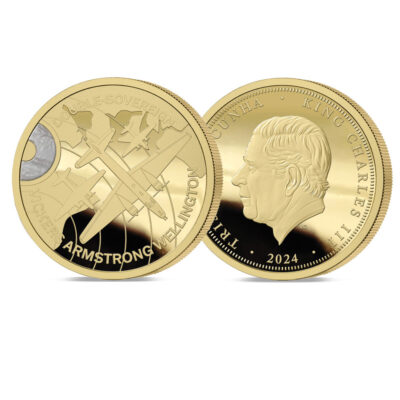 The 2024 Britain's WWII Aircraft Legends Gold Double Sovereign
The 2024 Britain's WWII Aircraft Legends Gold Double Sovereign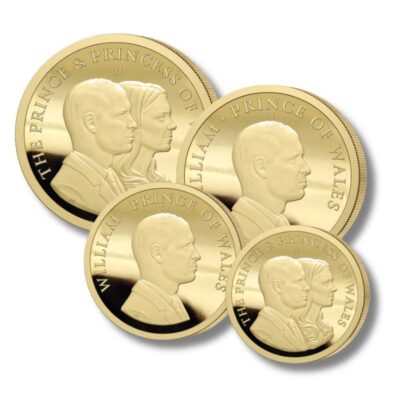 The 2023 Royalty Collection
The 2023 Royalty Collection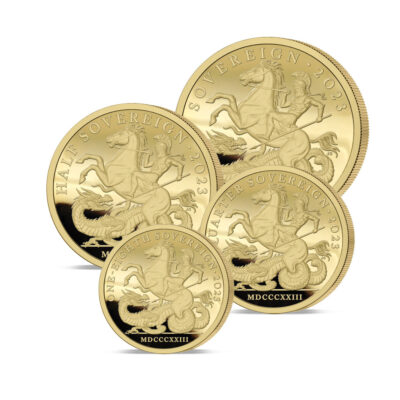 The 2023 Double Sovereign 200th Anniversary Gold Prestige Sovereign Set
The 2023 Double Sovereign 200th Anniversary Gold Prestige Sovereign Set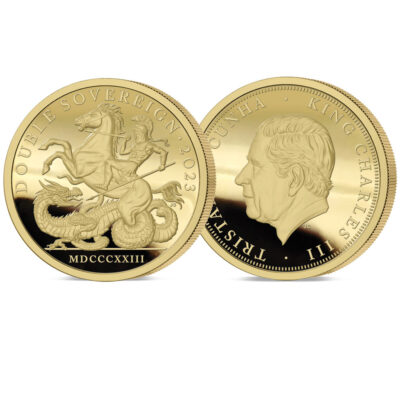 The 2023 Double Sovereign 200th Anniversary Gold Double Sovereign
The 2023 Double Sovereign 200th Anniversary Gold Double Sovereign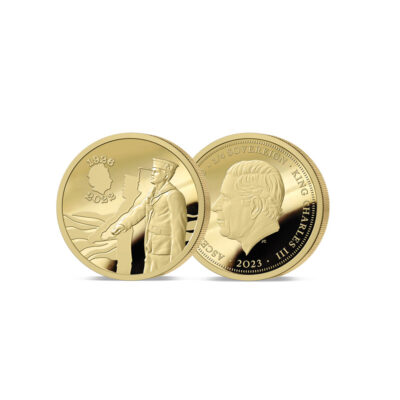 The 2023 Queen Elizabeth II Memorial Gold Quarter Sovereign
The 2023 Queen Elizabeth II Memorial Gold Quarter Sovereign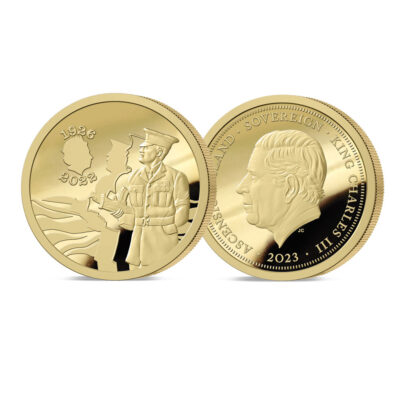 The 2023 Queen Elizabeth II Memorial Gold Sovereign
The 2023 Queen Elizabeth II Memorial Gold Sovereign The 2023 Queen Elizabeth II Memorial Gold Double Sovereign
The 2023 Queen Elizabeth II Memorial Gold Double Sovereign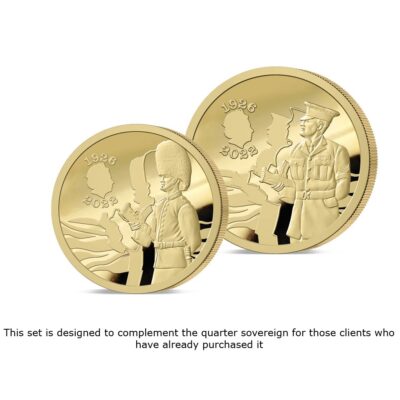 The 2023 Queen Elizabeth II Memorial Gold Prestige Infill Sovereign Set
The 2023 Queen Elizabeth II Memorial Gold Prestige Infill Sovereign Set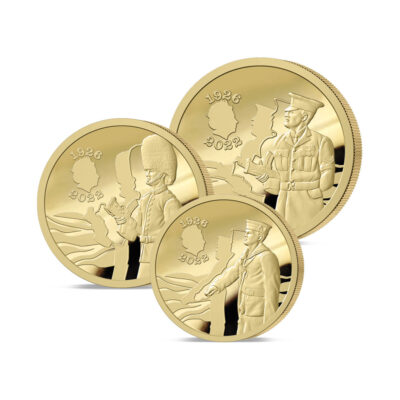 The 2023 Queen Elizabeth II Memorial Gold Prestige Sovereign Proof Set
The 2023 Queen Elizabeth II Memorial Gold Prestige Sovereign Proof Set The 2023 Prince George's 10th Birthday Gold Sovereign
The 2023 Prince George's 10th Birthday Gold Sovereign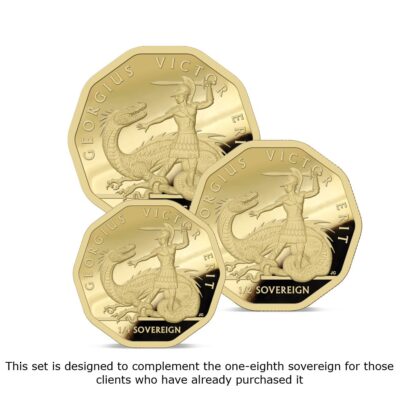 The 2023 Prince George's 10th Birthday Gold Prestige Infill Sovereign Set
The 2023 Prince George's 10th Birthday Gold Prestige Infill Sovereign Set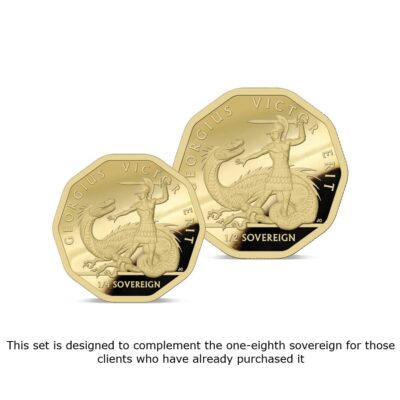 The 2023 Prince George's 10th Birthday Gold Fractional Infill Sovereign Set
The 2023 Prince George's 10th Birthday Gold Fractional Infill Sovereign Set The 2023 Prince George's 10th Birthday Gold Double Sovereign
The 2023 Prince George's 10th Birthday Gold Double Sovereign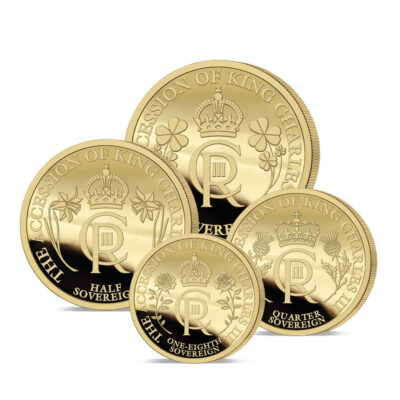 The 2023 King Charles III Accession Prestige Sovereign Proof Set
The 2023 King Charles III Accession Prestige Sovereign Proof Set The 2023 King Charles III Accession Fractional Infill Sovereign Set
The 2023 King Charles III Accession Fractional Infill Sovereign Set The 2023 King Charles III Accession Prestige Three Coin Sovereign Set
The 2023 King Charles III Accession Prestige Three Coin Sovereign Set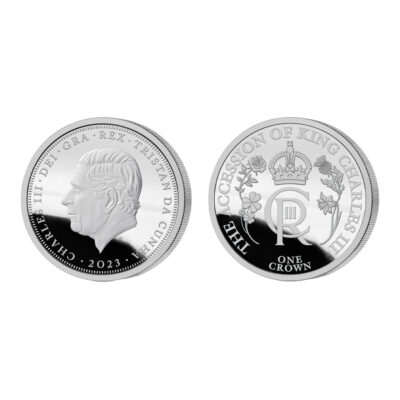 The 2023 King Charles III Accession Silver One Crown
The 2023 King Charles III Accession Silver One Crown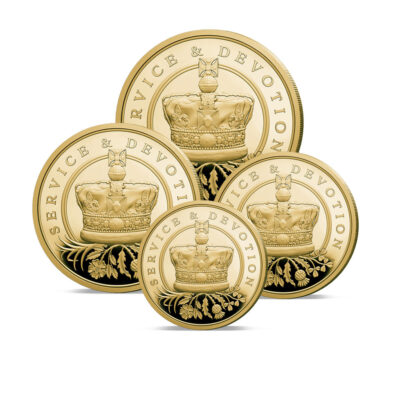 The 2022 Queen Elizabeth II Tribute Gold Prestige Sovereign Proof Set
The 2022 Queen Elizabeth II Tribute Gold Prestige Sovereign Proof Set The 2022 Queen Elizabeth II Tribute Gold Fractional Sovereign Set
The 2022 Queen Elizabeth II Tribute Gold Fractional Sovereign Set The 2022 Queen Elizabeth II Tribute Gold Fractional Infill Sovereign Set
The 2022 Queen Elizabeth II Tribute Gold Fractional Infill Sovereign Set The 2022 Queen Elizabeth II Tribute Gold Double Sovereign
The 2022 Queen Elizabeth II Tribute Gold Double Sovereign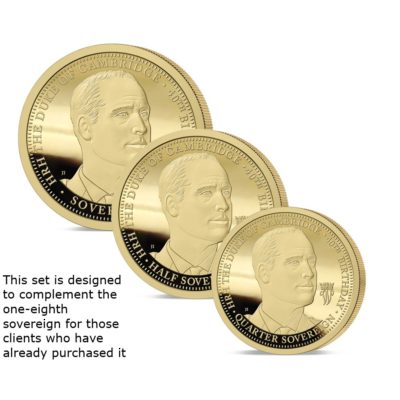 The 2022 Prince William 40th Birthday Gold Prestige Infill Sovereign Set
The 2022 Prince William 40th Birthday Gold Prestige Infill Sovereign Set The 2022 Prince William 40th Birthday Gold Prestige Sovereign Proof Set
The 2022 Prince William 40th Birthday Gold Prestige Sovereign Proof Set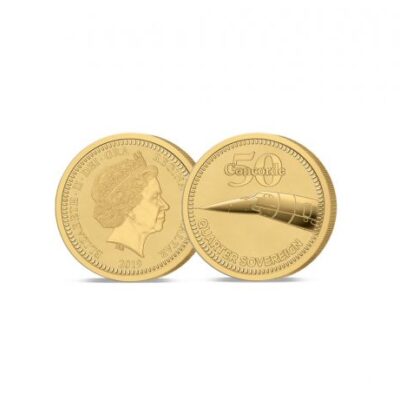 The 2019 Concorde 50th Anniversary Gold Quarter Sovereign
The 2019 Concorde 50th Anniversary Gold Quarter Sovereign The 2019 Concorde 50th Anniversary Gold Double Sovereign
The 2019 Concorde 50th Anniversary Gold Double Sovereign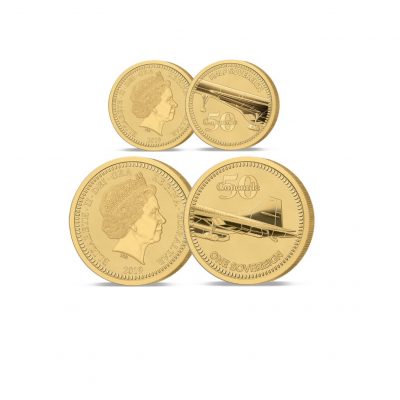 The 2019 Concorde 50th Anniversary Gold Half and Full Sovereign Set
The 2019 Concorde 50th Anniversary Gold Half and Full Sovereign Set The 2019 Concorde 50th Anniversary Gold Prestige Sovereign Proof Set
The 2019 Concorde 50th Anniversary Gold Prestige Sovereign Proof Set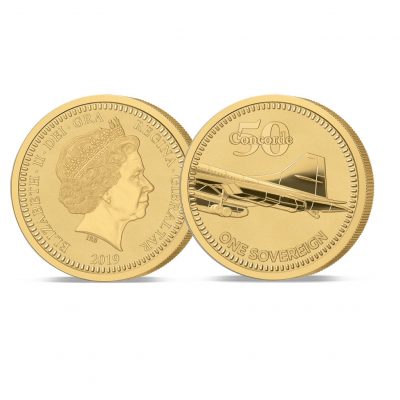 The 2019 Concorde 50th Anniversary Gold Sovereign
The 2019 Concorde 50th Anniversary Gold Sovereign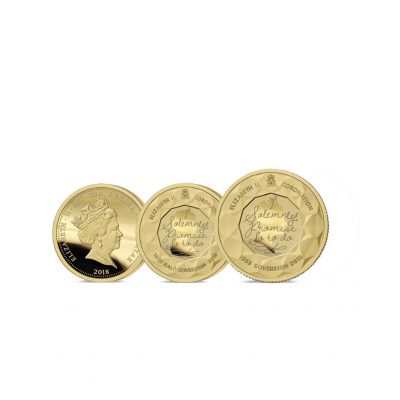 The 2018 Sapphire Coronation Jubilee Gold Half and Full Sovereign Set
The 2018 Sapphire Coronation Jubilee Gold Half and Full Sovereign Set The 2018 Sapphire Coronation Jubilee Gold Sovereign
The 2018 Sapphire Coronation Jubilee Gold Sovereign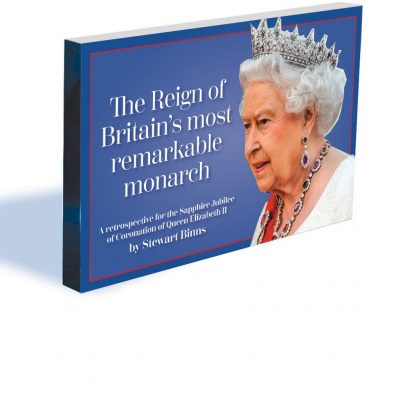 The Reign of Britain s Most Remarkable Monarch Book by Stewart Binns
The Reign of Britain s Most Remarkable Monarch Book by Stewart Binns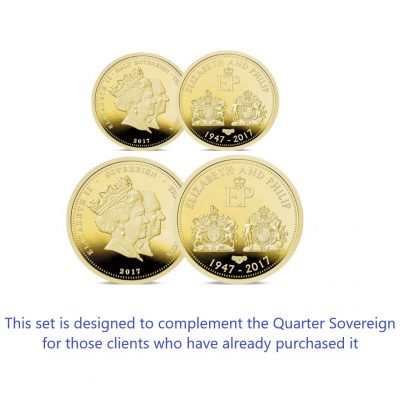 The 2017 Double Portrait Platinum Wedding Anniversary Gold Half and Full Infill Sovereign Set
The 2017 Double Portrait Platinum Wedding Anniversary Gold Half and Full Infill Sovereign Set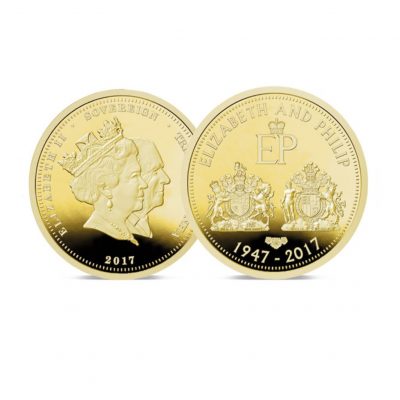 The 2017 Double Portrait Platinum Wedding Anniversary Gold Sovereign
The 2017 Double Portrait Platinum Wedding Anniversary Gold Sovereign The 2017 Double Portrait Platinum Wedding Anniversary Gold Half and Full Two Coin Sovereign Set
The 2017 Double Portrait Platinum Wedding Anniversary Gold Half and Full Two Coin Sovereign Set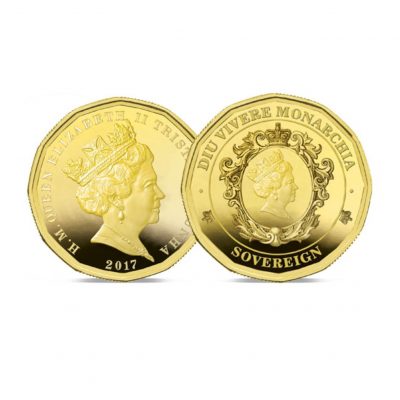 The 2017 12-Sided Gold Sovereign
The 2017 12-Sided Gold Sovereign The 2017 Twelve-Sided Gold Half and Full Sovereign Set
The 2017 Twelve-Sided Gold Half and Full Sovereign Set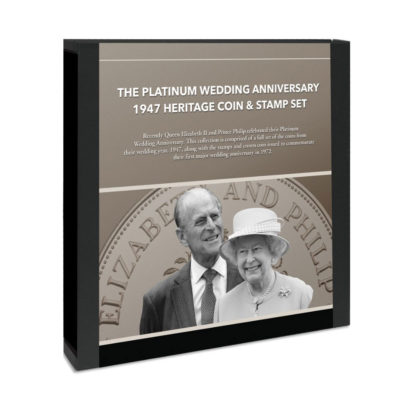 The Platinum Wedding Anniversary 1947 Heritage British Set of Coins
The Platinum Wedding Anniversary 1947 Heritage British Set of Coins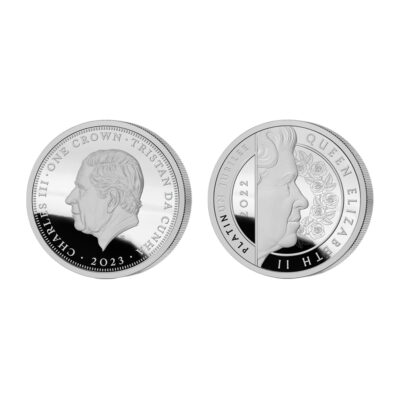 The 2023 King Charles III Greatest Monarchs Silver One Crown
The 2023 King Charles III Greatest Monarchs Silver One Crown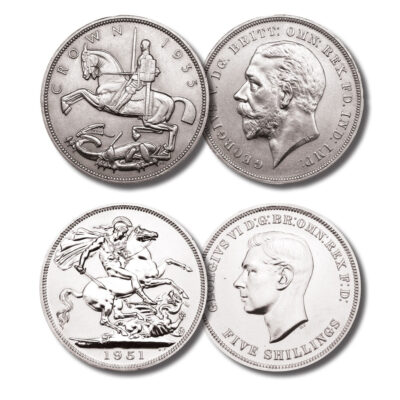 Britain's 20th Century St George and the Dragon Crown Set
Britain's 20th Century St George and the Dragon Crown Set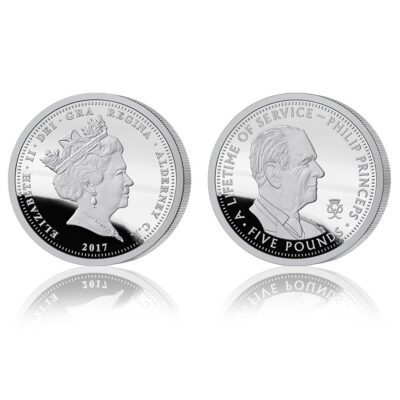 Prince Philip - A Lifetime of Service Silver Proof Five Pound
Prince Philip - A Lifetime of Service Silver Proof Five Pound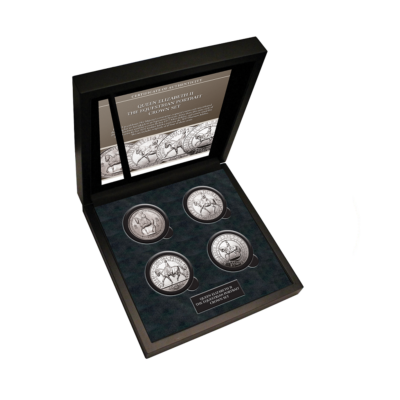 Queen Elizabeth II 'The Equestrian Portrait' Crown Set
Queen Elizabeth II 'The Equestrian Portrait' Crown Set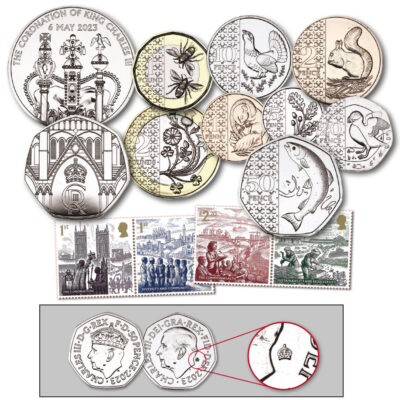 King Charles III 2023 Coronation Coin and Stamp Set
King Charles III 2023 Coronation Coin and Stamp Set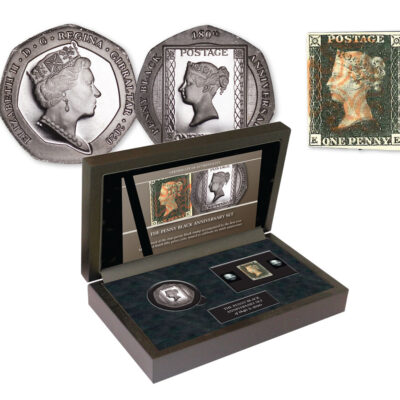 The Penny Black Anniversary Set
The Penny Black Anniversary Set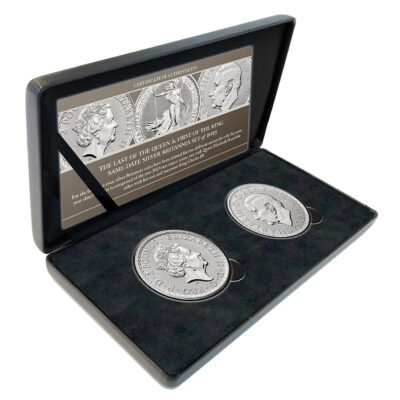 The Last of the Queen and the First of the King Same-Date Silver Britannia Set of 2023
The Last of the Queen and the First of the King Same-Date Silver Britannia Set of 2023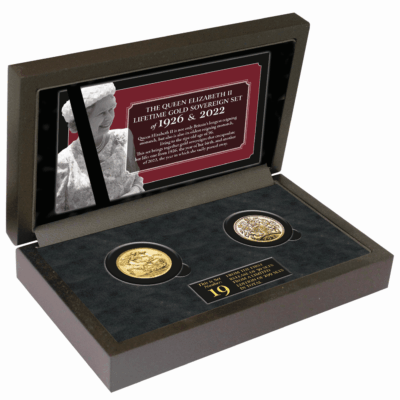 Queen Elizabeth II Lifetime Gold Sovereign Set of 1926 and 2022
Queen Elizabeth II Lifetime Gold Sovereign Set of 1926 and 2022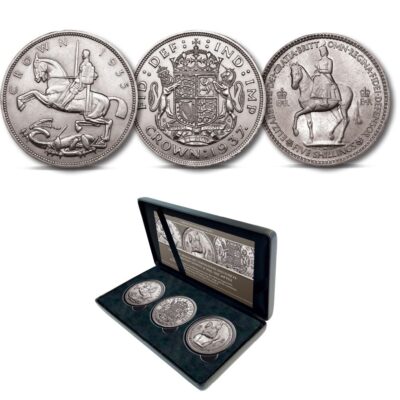 The Three Monarchs' Coronation and Jubilee Crown Set 1935-1953
The Three Monarchs' Coronation and Jubilee Crown Set 1935-1953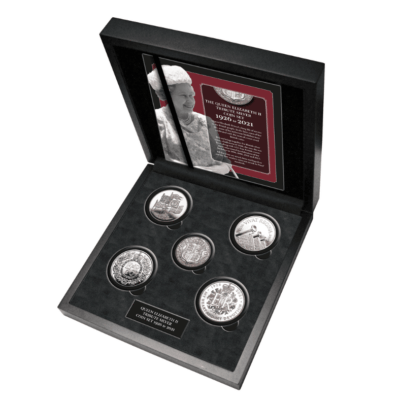 The Queen Elizabeth II Centenary of Birth Tribute 1926-2021 Silver Halfcrown & Silver Crown Set
The Queen Elizabeth II Centenary of Birth Tribute 1926-2021 Silver Halfcrown & Silver Crown Set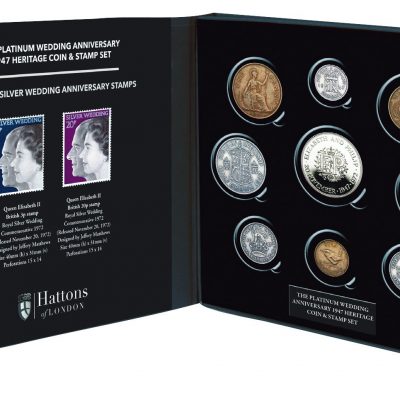 The Platinum Wedding Anniversary 1947 Heritage British Set of Coins (includes 1972 Silver Crown)
The Platinum Wedding Anniversary 1947 Heritage British Set of Coins (includes 1972 Silver Crown)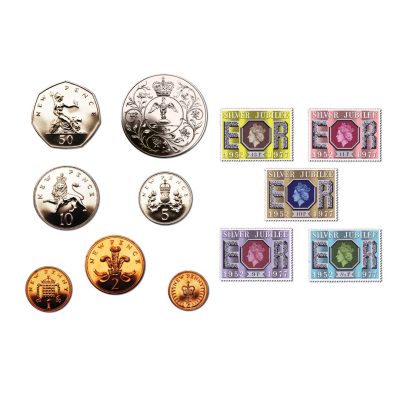 QEII 1977 Silver Jubilee coin and stamp set
QEII 1977 Silver Jubilee coin and stamp set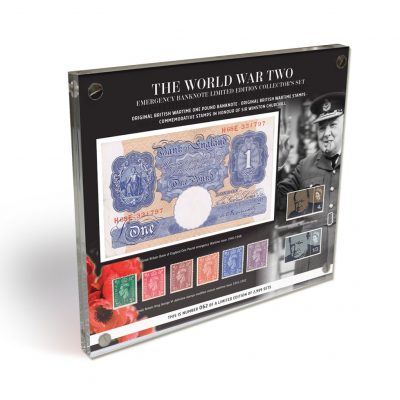 The WWII Emergency Banknote and Stamp Limited Edition Set
The WWII Emergency Banknote and Stamp Limited Edition Set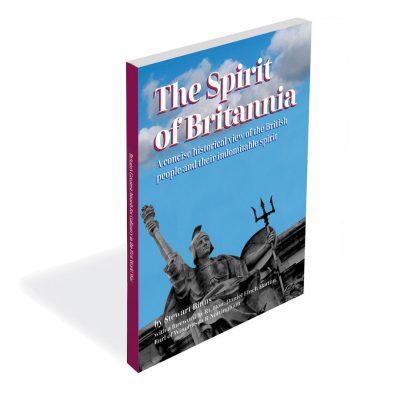 The Spirit of Britannia Book
The Spirit of Britannia Book
